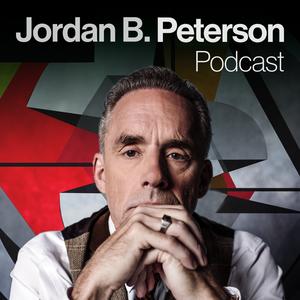Intro
In episode #264 of “The Peter Attia Drive” podcast, Dr. Adam Cohen, a board-certified orthopedic surgeon and sports medicine specialist, joins Peter Attia to discuss common lower extremity injuries and their management. Dr. Cohen provides valuable insights into hip, knee, ankle, and foot injuries, as well as prevention and treatment options. This episode aims to translate the science of orthopedics into accessible content for listeners.
Main Takeaways
Hip Injuries
- The hip joint is a ball and socket joint with a deep socket called the acetabulum.
- Developmental dysplasia of the hip is a condition where the hip is not concentrically reduced and can lead to mechanical overload and arthritis.
- Using ultrasound to check for dysplasia is more effective than relying solely on an exam.
- Hip pain can have multiple sources including bone, cartilage, connective tissue, ligaments, capsule, muscle-tendon, and referred pain from the back.
- Top three most common diagnoses for hip pain in individuals under 50 are bone, cartilage, and connective tissue problems.
- Endurance athletes are at high risk for stress fractures in the femoral neck and prompt treatment is important to avoid bad consequences.
- Women are more susceptible to hip injuries than men, particularly in their 40s.
- The gluteus medius and minimus are important muscles in the hip and can degenerate after a certain age, causing weakness and pain.
- Weak gluteus medius and abductors can cause lower extremity injuries in the hip and knee, including ACL injuries and hip fractures.
- Hip replacements have become more tolerable over the years due to different approaches and technology advancements.
Knee Injuries
- Knee injuries can result from trauma or overuse and can be managed with surgery or physical therapy.
- Menisci distribute force across the knee and are imperative to maintain healthy knee joints.
- Good mechanical alignment is important for knee health, and proper mechanics during activities like running can reduce the impact on the knee.
- ACL tears can lead to increased compressive force and higher risk of arthritis.
- Women have a higher risk of ACL tear than men due to neuromuscular control factors and weaker glutes medius.
- Treatment for meniscus tears depends on the type of tear and the patient’s age and condition.
- Knee replacement surgery is typically recommended when conservative treatments have failed and quality of life is severely impacted.
- Precision in cuts and angles during surgery is crucial for successful outcomes.
- Patients may continue to improve up to a year or even longer after knee replacement surgery.
Ankle and Foot Injuries
- The ankle joint has a low incidence of arthritis due to its perfect surface-to-surface level and congruence.
- Achilles tendonitis is a common problem for athletes, and surgery is not always an effective treatment.
- Fluoroquinolone antibiotics may slightly increase the risk of Achilles tendon rupture, and patients should stop and rest if they experience any pain.
- Understanding the bony structures and tendons of the ankle can help maintain arch and prevent injuries.
- The lateral part of the ankle is where most ankle sprains happen, and the main ligament that’s injured is called the ATFL.
- People with pronated, flat feet may not benefit from exercise or orthotic arches due to the mechanical differences in their anatomy.
- Bunion surgery is necessary when the bunion starts to crowd out the toe and cause pain, requiring osteotomies or cuts in the bone to straighten out the area.
- Heel pain is its own problem and can be caused by various issues, including stress fractures, plantar fasciitis, tendonitis, nerve compression, and disc herniation affecting the S1 nerve root.
Summary
Hip Injuries
The hip joint is a complex structure susceptible to various injuries. Developmental dysplasia of the hip, a condition where the hip is not properly formed, can lead to mechanical overload and arthritis. Prompt diagnosis using ultrasound is crucial for effective management. Hip pain can have multiple sources, and endurance athletes are at high risk for stress fractures. Women, especially in their 40s, are more prone to hip injuries. Weak gluteus medius and abductors can contribute to lower extremity injuries, including ACL injuries and hip fractures. Advances in hip replacement surgery have improved outcomes.
Knee Injuries
Knee injuries can result from trauma or overuse, and treatment options include surgery and physical therapy. Menisci play a vital role in distributing force across the knee joint. Maintaining good mechanical alignment and proper mechanics during activities can help prevent knee injuries. ACL tears can increase the risk of arthritis, especially in women. Treatment for meniscus tears depends on various factors. Knee replacement surgery is considered when conservative treatments fail to improve quality of life.
Ankle and Foot Injuries
The ankle joint has a low incidence of arthritis due to its optimal structure. Achilles tendonitis is a common problem, and surgical interventions may not always be effective. Understanding the anatomy of the ankle and foot can help prevent injuries. Ankle sprains, particularly affecting the ATFL ligament, are common. Flat feet may require different approaches for treatment. Bunion surgery may be necessary to alleviate pain and correct deformities. Heel pain can be caused by various factors, including stress fractures and nerve compression.
Conclusion
In this episode of “The Peter Attia Drive” podcast, Dr. Adam Cohen provides valuable insights into common lower extremity injuries and their management. From hip and knee injuries to ankle and foot conditions, the discussion covers a wide range of topics. Understanding the causes, prevention strategies, and treatment options for these injuries can help individuals maintain optimal orthopedic health and improve their quality of life.
